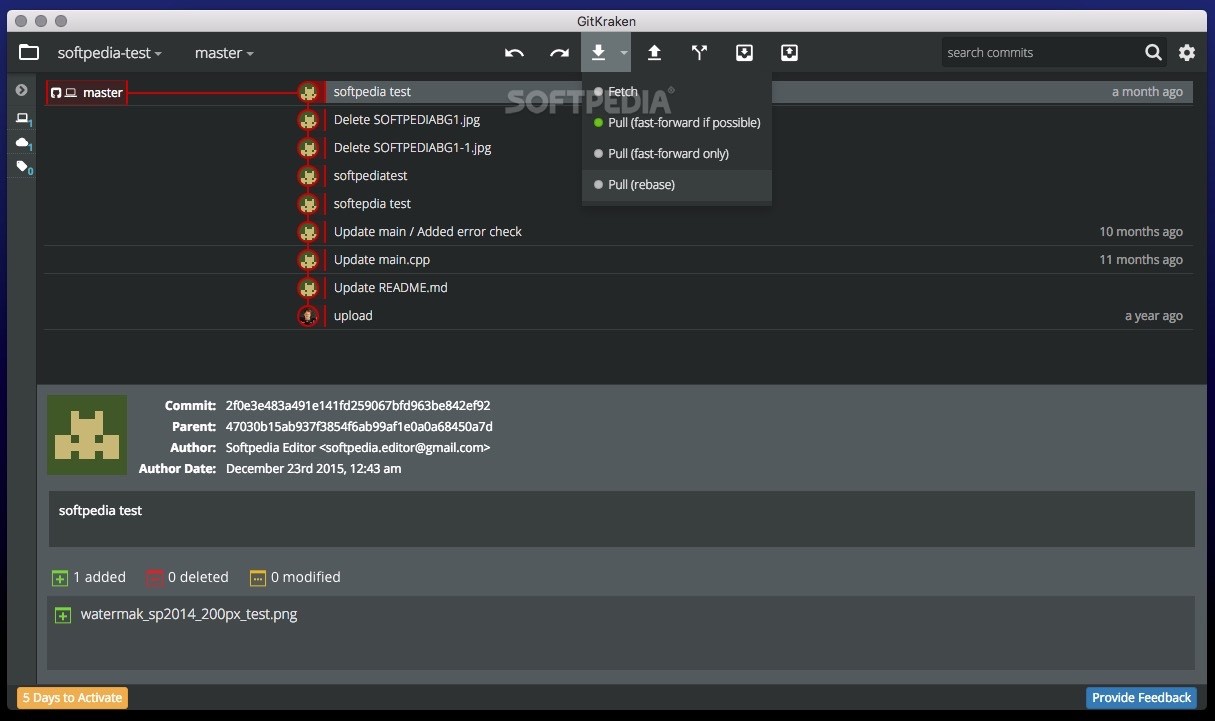
This makes it entirely possible, and even likely, for a merge conflict to occur when pulling the latest commits into your working branch. Typically, when a developer is working in a team environment, many developers work within the same application. The color-coded system is not only visually appealing, it makes it incredibly easy to track, manage, and further understand commits to the repository.

Clicking any one of those files will replace the center history window with a syntax color-coded version of the changes that were made during the commit for that file. Every commit is color-coded along with the branch name, the user who committed to that branch, and a summary of those commits.Ĭlicking on a single line of the commit history will display the files associated with it in the right sidebar. The first thing you’ll notice when you open a repository is the colorful visual history of the commits made to the repository. These are listed and discussed in the blog below. GitKraken has all of the expected features of a graphical user interface for source control usage, AND it has a few hidden jewels which make it an absolutely outstanding tool to use. No matter what type of development environment you’re working in, you can have the power of a graphical user interface for Git. GitKraken is cross-platform, which means that developers can use it on Windows, Mac, and/or Linux.
#Gitkraken view file history code#
GitKraken is a graphical user interface for Git built on top of the Electron framework – much like the popular Visual Code editor is. Today, I would like to introduce you to GitKraken, Git GUI for Git. Typically, users in the past have used either the command line or some variation of a visual graphical interface. In recent years, Git has become one of the most popular source control systems used around the world. Please keep that in mind as you read the post. In Git, with Sourcetree or GitKraken, you can easily see a file's history without having to checkout the whole project from a previous commit.Attention: The following article was published over 3 years ago, and the information provided may be aged or outdated. Unless I'm mistaken, with Collaborate it seems like I'd have to first commit all current changes, then restore an older commit to get the whole project as it was in that older state, then open the file to view the content at that time.

I noticed there were other comments on the blog with concerns about this as well.Īlso, many times I find that I've been making changes to a particular script and then realize I want to view that same script in an older state to see what I had deleted. With Collaborate, how do you envision being able to handle similar scenarios? I guess we could create a new repository for newer versions/features, but then we wouldn't be able to bring in the fixes on the release repository. It would seem very helpful to also be able to bring those fixes in to a branch where new features are being worked on.

I was thinking about things like how branching can help with release versions, and trying to issue patches and fixes for those releases while working on new features. I noticed on the Unity blog post a while ago that after some testing and feedback, branching would not be included.
#Gitkraken view file history upgrade#
I'm about to upgrade to Beta19, but just wanted to say that after trying out Git, Mercurial, and PlasticSCM (which all have their advantages/disadvantages), it's nice to have a form of version control integrated in the editor, so thanks! Hi, I've been using Collaborate with Beta17 without any problems.


 0 kommentar(er)
0 kommentar(er)
